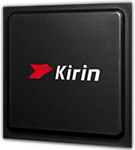
HiSilicon Kirin 659 Benchmark, Test and specs
Last updated:
The HiSilicon Kirin 659 has 8 cores with 8 threads and is based on the 4. gen of the HiSilicon Kirin series. The processor was released in Q2/2016. The HiSilicon Kirin 659 scores 193 points in the Geekbench 5 single-core benchmark. In the Geekbench 5 multi-core benchmark, the result is 893 points.
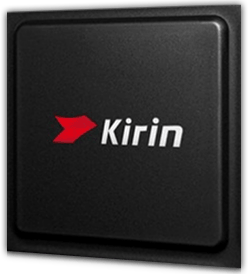
| Name: | HiSilicon Kirin 659 |
|---|---|
| Family: | HiSilicon Kirin (29) |
| CPU group: | HiSilicon Kirin 650 (4) |
| Architecture: | Cortex-A53 / Cortex-A53 |
| Segment: | Mobile |
| Generation: | 4 |
| Predecessor: | -- |
| Successor: | -- |
CPU Cores and Base Frequency
The HiSilicon Kirin 659 has 8 CPU cores and can calculate 8 threads in parallel. The clock frequency of the HiSilicon Kirin 659 is 2.36 GHz. The number of CPU cores greatly affects the speed of the processor and is an important performance indicator.
| CPU Cores / Threads: | 8 / 8 |
|---|---|
| Core architecture: | hybrid (big.LITTLE) |
| A-Core: | 4x Cortex-A53 |
| B-Core: | 4x Cortex-A53 |
| Hyperthreading / SMT: | No |
|---|---|
| Overclocking: | No |
| A-Core Frequency: | 2.36 GHz |
| B-Core Frequency: | 1.70 GHz |
Internal Graphics
The HiSilicon Kirin 659 has integrated graphics, called iGPU for short. Specifically, the HiSilicon Kirin 659 uses the ARM Mali-T830 MP2, which has 32 texture shaders and 2 execution units. The iGPU uses the system's main memory as graphics memory and sits on the processor's die.
| GPU name: | ARM Mali-T830 MP2 |
|---|---|
| GPU frequency: | 0.90 GHz |
| GPU (Turbo): | No turbo |
| Compute units: | 2 |
| Shader: | 32 |
| Hardware Raytracing: | No |
| Release date: | Q4/2015 |
| Max. displays: | 2 |
|---|---|
| Generation: | Midgard 4 |
| Direct X: | 11 |
| Technology: | 28nm |
| Max. GPU Memory: | -- |
| Frame Generation: | No |
Hardware codec support
A photo or video codec that is accelerated in hardware can greatly accelerate the working speed of a processor and extend the battery life of notebooks or smartphones when playing videos.
| h265 / HEVC (8 bit): | Decode / Encode |
|---|---|
| h265 / HEVC (10 bit): | Decode |
| h264: | Decode / Encode |
| VP8: | Decode / Encode |
| VP9: | No |
| AV1: | No |
|---|---|
| AVC: | No |
| VC-1: | No |
| JPEG: | Decode / Encode |
Memory & PCIeThe processor can use up to memory in 2 (Dual Channel) memory channels. The maximum memory bandwidth is --. The memory type as well as the amount of memory can greatly affect the speed of the system. |
|
| Memory type: | Memory bandwidth: |
|---|---|
| LPDDR3-933 | -- |
| Max. Memory: | |
| Memory channels: | 2 (Dual Channel) |
| ECC: | No |
| PCIe: | |
| PCIe Bandwidth: | -- |
Thermal ManagementThe thermal design power (TDP for short) of the processor is . The TDP specifies the necessary cooling solution that is required to cool the processor sufficiently. The TDP usually gives a rough idea of the actual power consumption of the CPU. |
|
|---|---|
| TDP (PL1 / PBP): | |
| TDP (PL2): | -- |
| TDP up: | -- |
| TDP down: | -- |
| Tjunction max.: | -- |
Technical details
The HiSilicon Kirin 659 is made in 16 nm. The smaller the manufacturing process of a CPU, the more modern and energy-efficient it is. Overall, the processor has 0.00 MB cache. A large cache can greatly speed up the processor's speed in some cases such as games.
| Technology: | 16 nm |
|---|---|
| Chip design: | Chiplet |
| Socket: | -- |
| L2-Cache: | -- |
| L3-Cache: | -- |
| AES-NI: | No |
| Operating systems: | Android |
| Virtualization: | None |
|---|---|
| Instruction set (ISA): | Armv8-A (64 bit) |
| ISA extensions: | -- |
| Release date: | Q2/2016 |
| Release price: | -- |
| Part Number: | -- |
| Documents: | -- |
Rate this processor
Benchmark results

The benchmark results for the HiSilicon Kirin 659 have been carefully checked by us. We only publish benchmark results that have been created by us or that have been submitted by a visitor and then checked by a team member. All results are based on and fullfill our benchmark guidelines.
Screenshots:
Screenshots:
Geekbench 5, 64bit (Single-Core)
Geekbench 5 is a cross plattform benchmark that heavily uses the systems memory. A fast memory will push the result a lot. The single-core test only uses one CPU core, the amount of cores or hyperthreading ability doesn't count.
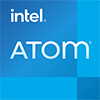
|
Intel Atom E3845
4C 4T @ 1.91 GHz |
||

|
Intel Celeron N2815
2C 2T @ 2.13 GHz |
||

|
Intel Celeron N2806
2C 2T @ 2.00 GHz |
||
|
|
HiSilicon Kirin 659
8C 8T @ 2.36 GHz |
||
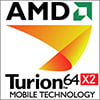
|
AMD Turion 64 MK-36
1C 1T @ 2.00 GHz |
||

|
Intel Celeron N2810
2C 2T @ 2.00 GHz |
||

|
Intel Atom Z3735D
4C 4T @ 1.83 GHz |
||
Geekbench 5, 64bit (Multi-Core)
Geekbench 5 is a cross plattform benchmark that heavily uses the systems memory. A fast memory will push the result a lot. The multi-core test involves all CPU cores and taks a big advantage of hyperthreading.

|
Qualcomm Snapdragon 820
4C 4T @ 2.15 GHz |
||

|
Intel Core i5-2467M
2C 4T @ 2.00 GHz |
||

|
Intel Celeron N4020
2C 2T @ 2.70 GHz |
||
|
|
HiSilicon Kirin 659
8C 8T @ 2.36 GHz |
||
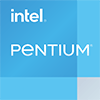
|
Intel Pentium Gold 4415Y
2C 4T @ 1.70 GHz |
||

|
MediaTek Helio G35
8C 8T @ 2.30 GHz |
||

|
Intel Celeron J4005
2C 2T @ 2.70 GHz |
||
iGPU - FP32 Performance (Single-precision GFLOPS)
The theoretical computing performance of the internal graphics unit of the processor with simple accuracy (32 bit) in GFLOPS. GFLOPS indicates how many billion floating point operations the iGPU can perform per second.
|
|
HiSilicon Kirin 650
ARM Mali-T830 MP2 @ 0.90 GHz |
||
|
|
HiSilicon Kirin 655
ARM Mali-T830 MP2 @ 0.90 GHz |
||
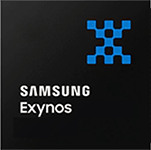
|
Samsung Exynos 7880
ARM Mali-T830 MP3 @ 0.60 GHz |
||
|
|
HiSilicon Kirin 659
ARM Mali-T830 MP2 @ 0.90 GHz |
||

|
MediaTek Helio G80
ARM Mali-G52 MP2 @ 0.95 GHz |
||

|
AMD GX-209HA
AMD Radeon HD 8180 @ 0.23 GHz |
||

|
AMD GX-210JA
AMD Radeon HD 8180 @ 0.23 GHz |
||
Benchmarks
Popular comparisons
back to index



